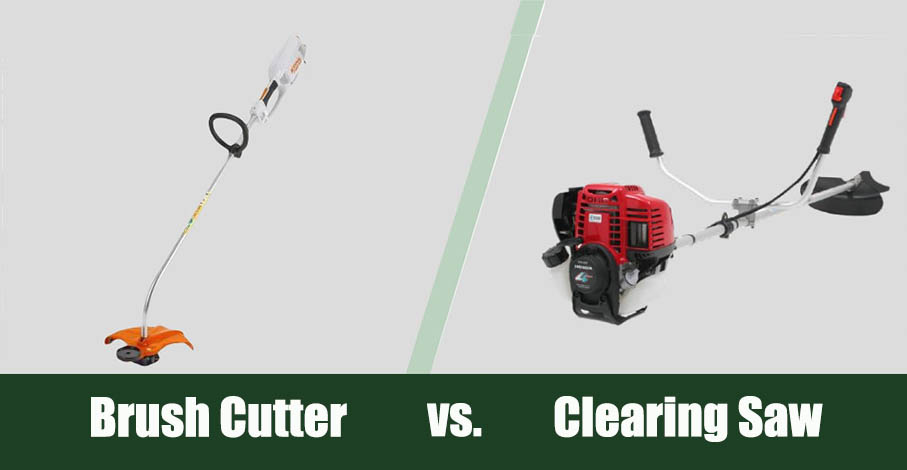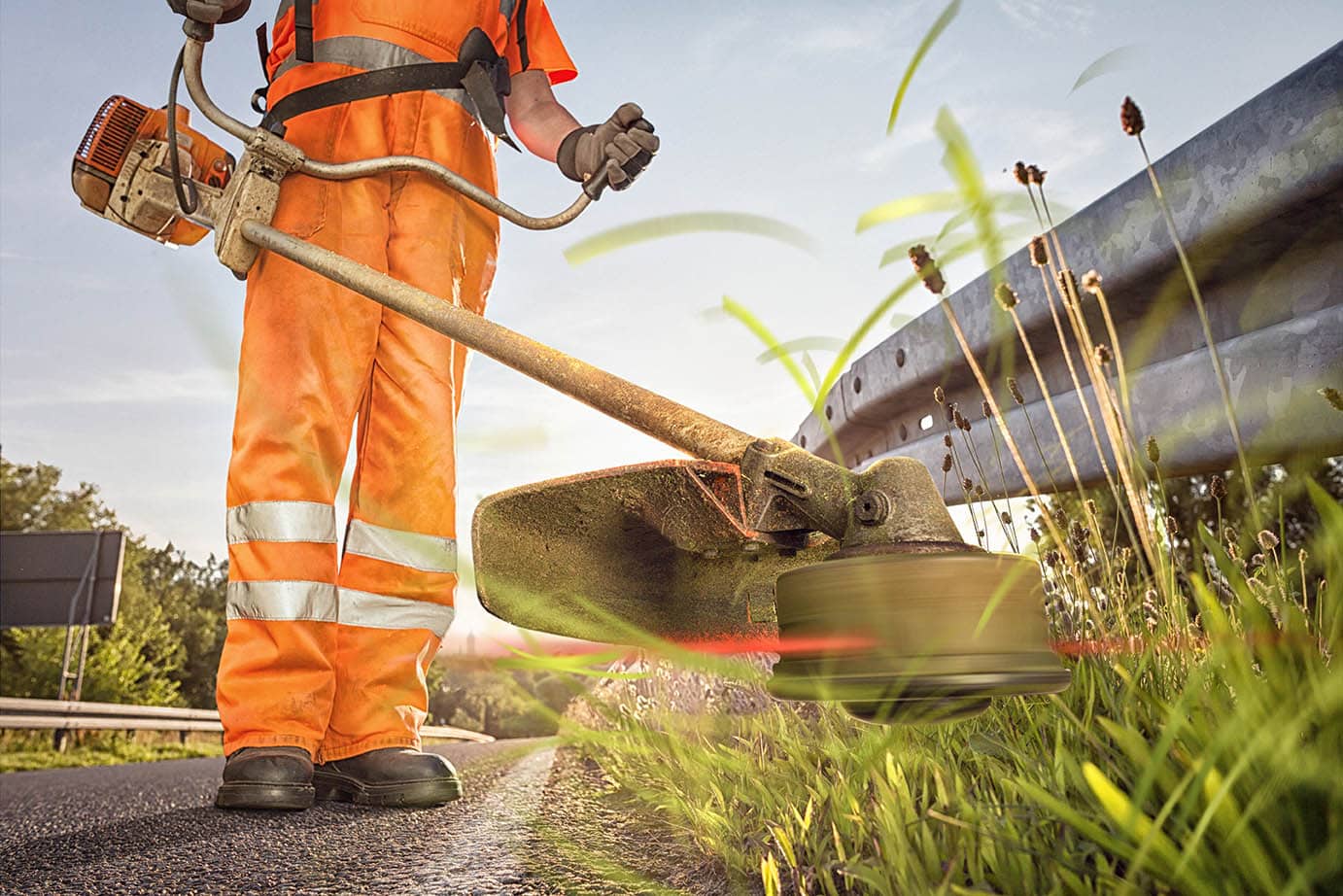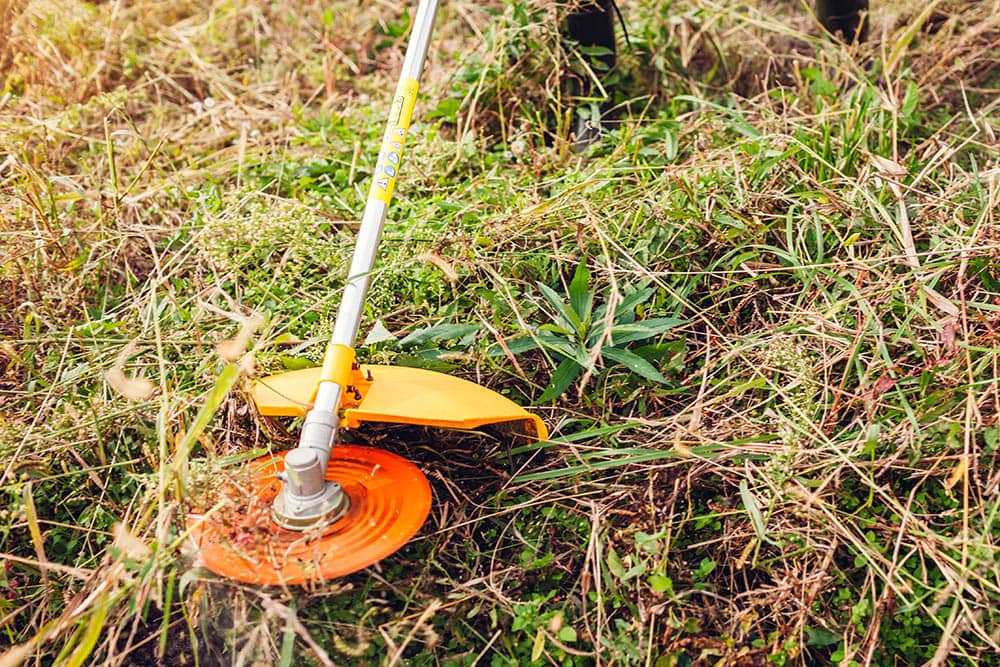Brush Cutter vs Clearing Saw: What’s the Difference?
-
Ed Malaker
- Last updated:

Brush cutters and clearing saws are similar tools to clear away dense shrubbery and small trees around our property. While both are useful, most homeowners only need one or the other. If you are not sure about which one to get for your home, keep reading while we take an in-depth look at it to help you make an educated decision.
Overview of the Brush Cutter

How it Works
The brush cutter is quite similar to the weed wacker, or weed eater, that most of us have used to trim away tall weeds that grow close to our homes. The shape is nearly identical to a traditional weed eater, but it uses plastic or metal blades instead of nylon string. In many cases, these blades are far more effective at removing dense shrubbery, like blackberry bushes, roses, etc. You can also use them to remove weeds around your home, making them quite versatile.
When to Choose
The brush cutter is our recommended tool for most homeowners. These tools are perfect for removing difficult weeds around your property, like saplings and vines that are too difficult for a standard weed eater. It’s lightweight, easy to use, and versatile because you can also use it as a weed eater. The downside to these tools is that there is a limit to what it can cut through, and you will need to recharge or refuel their small motor too frequently for large properties.
- Versatile
- Lightweight
- Less expensive
- Perfect for small homes
- Small motor
Overview of the Clearing Saw

How it Works
Like the brush cutter is the next level for a weed eater, the clearing saw is next after the brush cutter. This tool replaces the plastic blades of the brush cutter with a steel saw blade. It usually has two handles for more control while cutting. These tools have a more powerful engine, and when you combine them with the steel blade, you can cut through thick branches and shrubbery.
When to Choose
We recommend choosing the clearing saw when you live on a large property of several acres where thick shrubbery might have a chance to grow. If you need to cut branches more than ½-inch wide regularly, you will need a clearing saw. The downside to the clearing saw is that it is usually heavier than the other types and more expensive.
- Cuts through thick branches
- Steel saw blade
- Larger motor
- Expensive
The Cost Factor
You can expect to pay more for your clearing saw than you will for a brush cutter. You can expect to pay between $250 and $600 for your new brush cutter, depending on the quality and accessories it includes. The Husqvarna 336FR is a perfect example of a high-quality clearing saw. Brush cutters are considerably less expensive than clearing saws, though some new battery-powered units are climbing in price. These units are typically between $100 and $300 each. The COOCHEER 42.7cc Weed Wacker Gas Powered 2-in-1 Weed Eater Brush Cutter is the perfect example of a high-quality brush cutter that isn’t too expensive.
Safety
We highly recommend wearing the appropriate safety equipment when operating either the brush cutter or the clearing saw. These harder blades are much more capable of inflicting permanent damage than a traditional weed eater. Only use these tools while wearing long pants of a heavy fabric like jeans. Safety goggles and gloves are also highly recommended, especially if you need to trim above the waist, and always follow the guidelines in the owner’s manual for the product you purchase.
- Yard cleanup
- Small shrubbery
- Cutting small trees
- Large landscapes
- Commercial work
- Cutting thick branches
Conclusion
We recommend a brush cutter for most homes because it can double as a weed eater, and it’s usually powerful enough for most homes that only have a small landscape and don’t have a lot of thick branches to trim. If you have a lot of land with areas that grow wild or a commercial landscaping business, the clearing saw can be a valuable tool that saves time by making short work of thick and dense shrubbery and branches.
We hope you have enjoyed reading this guide and that it has helped answer your questions about the differences between these two useful tools.
Contents



